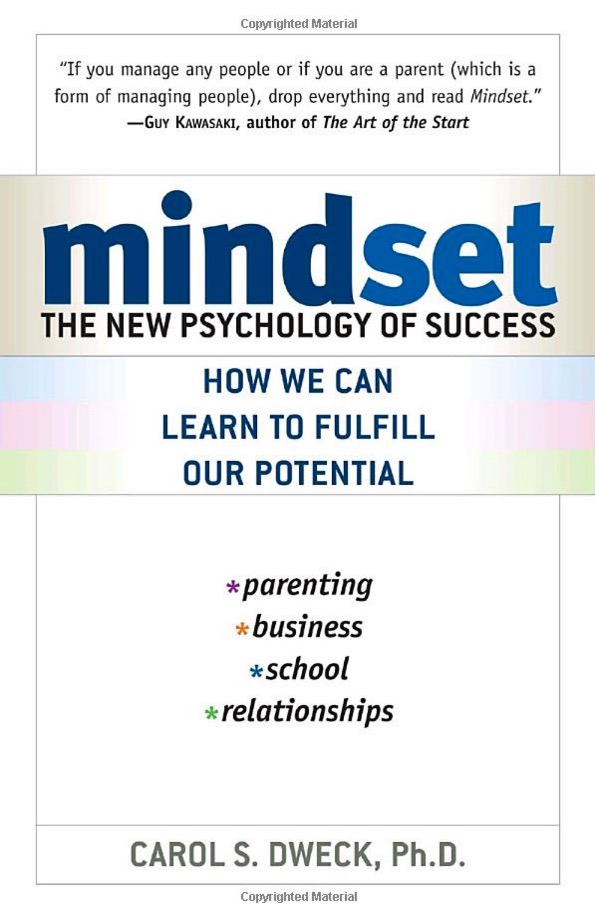Learning, Living & Teaching a Growth Mindset in HPL Classrooms
Mindsets (Dweck) are two different ways people view intelligence and ability. A fixed mindset is the belief that intelligence and abilities are static and unchanging: you are who you are; you are smart or or not so smart. You have certain abilities or you don’t. A growth mindset is the belief that intelligence and abilities can develop and grow. Our current abilities are simply a starting point.
Mindset underlies what we see as motivation or lack of it. It lies beneath what we observe as tenacity and grit in the face of challenges rather than a tendency to give up. It is that part of us that says, “I can’t do this…yet, but I think I can figure it out,” rather than, “I’m no good at this.”
Researcher Carol Dweck and her colleagues at Stanford University discovered this concept when they were studying children’s reactions to failure. They were surprised to find that many children who were unable to solve the problems they encountered didn’t view these experiences as failures at all: rather, they viewed them as opportunities to embrace challenge and figure things out. Their research led them to posit that there are two basic mindsets: a growth mindset, and a fixed mindset.
Can We Change Our Mindsets?
Yes. Mindset is not all or nothing. We all have growth mindsets about some things and fixed about other things. As educators, though, it is critical that we examine our mindsets, especially our mindsets about our students and about individual students in particular.
Do you really believe that every student can learn, change and grow if given appropriate opportunities and support? More to the point, do you believe you can learn, change and grow so that you can provide the support and experiences your most fragile learners need to grow, change and learn? These questions are critical for HPL educators.
Peter Johnson’s wonderful books, Choice Words and Opening Minds provide help for us to examine our mindsets through the ways we use language in our classrooms. Are we fostering growth mindsets or fixed mindsets with the language we use…often with our best intentions? How does our language reflect our beliefs and foster children’s beliefs in the nature of their own capacities?
A Few of our Favorite Videos about Mindset
Growth Mindset Swimmer
This young man joined his high school swim team…but he didn’t know how to swim! His belief that he could develop his abilities togetehr with time and effort allowed him to become a competitor. Published on YouTube April 18, 2018
Neuroplasticity
Scientists now understand that our brains are malleable. We are constantly wiring and rewiring our brains throughout our lives. Published on YouTube January 17, 2016
Mindset & Practice in Maths
Jo Boaler, a professor of mathematics learning at Stanford University explains mindset in maths. Published on YouTubeMay 15, 2016
Braincrossing in Maths
Jo Boaler, a professor of mathematics learning at Stanford University explains how doing math different ways–visualizing, modleing, drawing, explaining–creates linkages in the brain that foster deep learning. Published on YouTubeMay 15, 2016
Famous Failures before Success
Everyone who is successful has experienced failure first. Published on YouTube January 17, 2016
Girl’s First Ski Jump
A fourth-grade girl overcomes her fears to make her first ski jump. We all have the capacity to learn from our own experiences.
The Woman Who Changed her Brain
Barbara Arrowsmith-Young is a living example of the power of the human mind to recreate itself. She is the Creator and Director of Arrowsmith School and Arrowsmith Program, and the author of the international best-selling book The Woman Who Changed Her Brain. She is recognized as the creator of one of the first practical applications of the principles of neuroplasticity to the treatment of learning disorders. Published on YouTube April 27, 2013
High Progress Literacy is copyright (c) 2022 by High Progress Literacy Associates, LLC. The materials on this site are free for individual use and for educational purposes. Any commercial use is strictly forbidden. Materials may not be redistributed without the express written permission of High Progress Literacy Associates, LLC.





